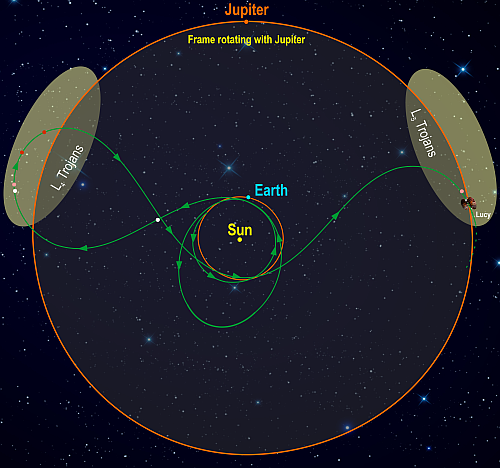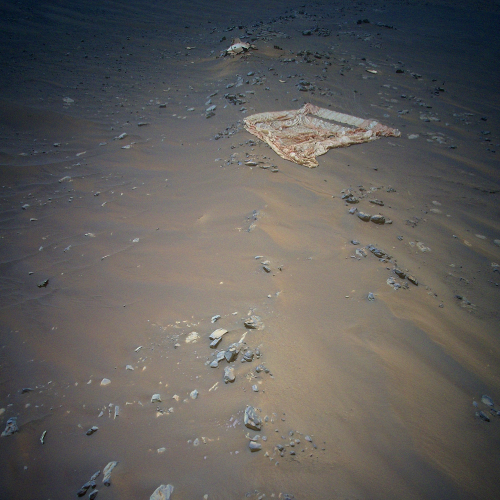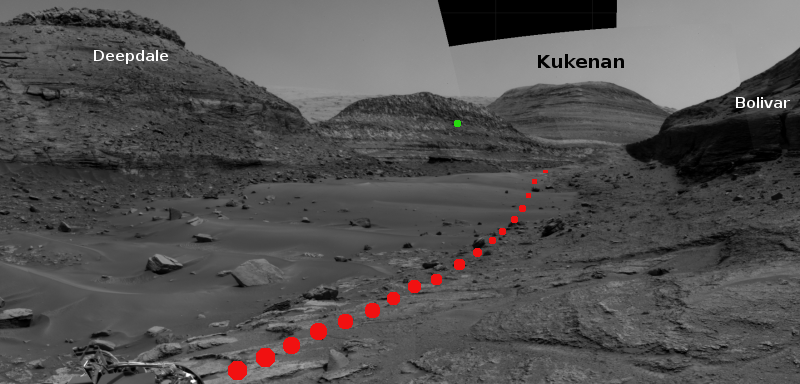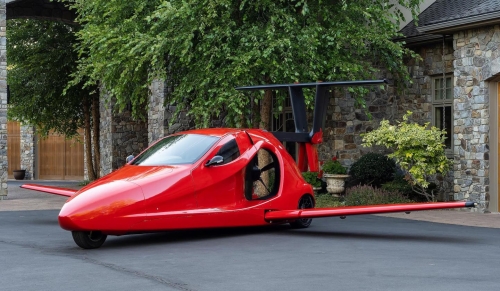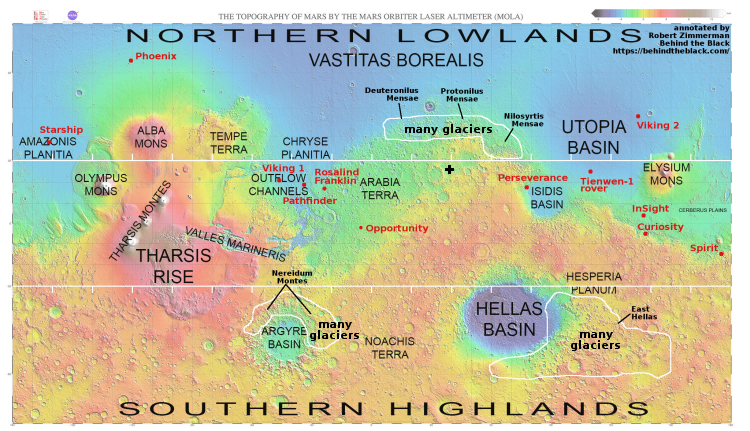Glacial flows pushing out through a Martian crater rim
Today’s cool image once again illustrates how Mars is far from a waterless planet. Instead, there is strong evidence that water ice can be found across most of the Red Planet’s surface, excluding the equatorial regions lower than 30 degrees latitude.
The photo to the right was taken on September 11, 2021 by the wide view context camera on Mars Reconnaissance Orbiter (MRO). It shows a 6-mile-wide unnamed crater on Mars, located at 35 degrees south latitude, with what appears to be a glacier in its interior, flowing to the southwest towards several breaches in the crater’s southwest rim. Several of those breaches now sit higher than the flow, suggesting that the glacier itself was once higher and flowed out of those gaps. Now the level has dropped, and the only place the glacier exits the crater is the central gap at the center of the white rectangle.
That white rectangle marks the area covered by a recent MRO high resolution image, taken on March 29, 2022 and cropped and reduced to post below.
» Read more
Today’s cool image once again illustrates how Mars is far from a waterless planet. Instead, there is strong evidence that water ice can be found across most of the Red Planet’s surface, excluding the equatorial regions lower than 30 degrees latitude.
The photo to the right was taken on September 11, 2021 by the wide view context camera on Mars Reconnaissance Orbiter (MRO). It shows a 6-mile-wide unnamed crater on Mars, located at 35 degrees south latitude, with what appears to be a glacier in its interior, flowing to the southwest towards several breaches in the crater’s southwest rim. Several of those breaches now sit higher than the flow, suggesting that the glacier itself was once higher and flowed out of those gaps. Now the level has dropped, and the only place the glacier exits the crater is the central gap at the center of the white rectangle.
That white rectangle marks the area covered by a recent MRO high resolution image, taken on March 29, 2022 and cropped and reduced to post below.
» Read more






